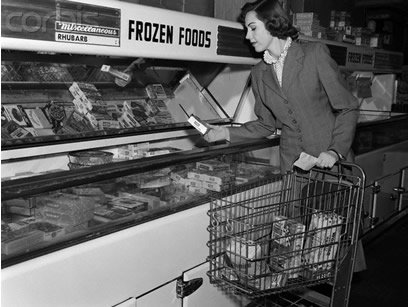From
When a single mother comes into Ramon Murphy’s bodega without enough money to buy milk, he feels helpless.
Usually, he gives her the milk.
“They say, ‘I’ll pay you next week.’ I say, ‘OK,’ because it’s hard when people come every day saying they don’t have milk for their kid,” said Murphy, who runs Red Apple Deli Supermarket on 143rd St. at Amsterdam Ave.
“I can’t say no, because I understand. I have three kids.”
Customers who can’t afford necessities are becoming more prevalent since food stamps were cut last fall for 1.8 million city residents.
That devastating reduction, which took away an average of $30 to $50 a month in benefits for 1 million households in the city, has also taken a toll on the local economy. The U.S. Department of Agriculture estimates that for every dollar spent on food stamps, $1.79 in economic activity is generated, mostly in local communities.
Red Apple Deli Supermarket is just one of the thousands of bodegas and food markets across the five boroughs feeling the effects.
“These aren’t businesses that generate hundreds of millions of dollars,” said Brad Gerstman, spokesman for the New York Association of Grocery Stores, an umbrella organization for mom-and-pop markets. “These are people who live day to day and work tremendous hours.”
Since Congress let a boost to food stamp benefits expire in November, customers who used to come to Murphy’s store every day now shop less frequently.
“Instead of $50 a week, they spend $25 a week,” he said.
He had to let two employees go in January.
That means Murphy, who runs the store with his wife, works about 16 hours a day instead of his once-regular nine-hour shift.
“They have less food stamps, and we do less business,” he said. “I started doing more hours because I can’t afford it.”
Larger supermarkets are feeling the pinch, too.
The Gristedes chain, which boasts about $200 million in annual sales from its 32 stores in Manhattan, Brooklyn and Westchester County, experienced a significant dip in food-stamp revenue after the cuts were implemented.
About $109,000 of the chain’s sales came from food stamps in the first week of January 2013, before the federal cuts went into effect. That number dropped to $90,000 in the corresponding week this year, according to figures from the store.
“Anytime you cut food stamps, it naturally affects sales,” said John Catsimatidis, who runs the grocery chain and was a Republican mayoral hopeful last year. “People spend less. They’re tight on the dollars in their pocketbook, and it does affect when our sales go down.”
Experts said Congress turned a blind eye to the impact on businesses when it failed to stop cuts to food stamps.
“We can expect that the establishments will have less revenue as a result of these cuts, and that’s a consequence people haven’t considered,” said Diane Gibson, an economics professor at Baruch College’s School of Public Affairs.
“If these stores struggle and go out of business, it further compounds the problem that residents of low-income areas often have getting access to food, let alone healthy food,” she said.
Advocates and experts also say the cuts force workers at bodegas and supermarkets into a vicious cycle they can’t reverse — they get laid off or work fewer hours, and then they often find themselves waiting in line at a food stamp center.
“These cuts to food stamps are a double-edged sword,” said Anthony Speelman of United Food and Commercial Workers Local 1500, the union that represents 23,000 grocery store employees in the city. “There will be more people applying for food stamps because they’re not getting the hours they used to.”
Nicholas Vielma, owner of La Merced Mexicana in Mott Haven, the Bronx, fears losing his store soon if the number of people shopping with food stamps keeps declining. He already cut back and keeps the store open six days a week instead of seven.
“Families are buying just enough to eat to survive,” Vielma said as he stocked oranges in front of his small shop. “The prices keep going up for fruits and vegetables, and people have less money, so it’s a big problem for me.”
Vielma said customers who once spent $80 to $100 on fruits and groceries now spend between $30 and $40.
Teresa Baez, the owner of ASRR Deli in Mott Haven, said the majority of her customers use food stamps to pay for everyday items — but business is not what it used to be.
“I see it every day,” said Baez, who had to cut her workers’ hours. “A big family that used to come in and get three loaves of bread and $8 in ham, now they get two loaves and $4 in ham. That’s a big difference at the end of the day for us.”
She added that there is an impact on the economy of the entire community.
“It’s affecting everyone who lives here, whether they get food stamps or not,” she said.
“People come in and they see the prices are more and they have less to spend,” Baez added. “Then I’m the one who feels the problems.”
Domingo Perez, owner of Hamilton Meat Market in Harlem, said he estimates sales have dropped roughly 15% since the stamp cuts went into effect.
His customers now buy half as many plantains, or fewer cuts of meat.
He sees them struggling, and he also observes his employees barely earning enough money to get by. He hasn’t cut their hours or let them go — yet.
“I’m holding out,” said Perez, 57. “This situation is really tough. In 30 years, I haven’t seen things as bad as they are now.”
Read more from NT Daily News

{ 0 comments… add one now }